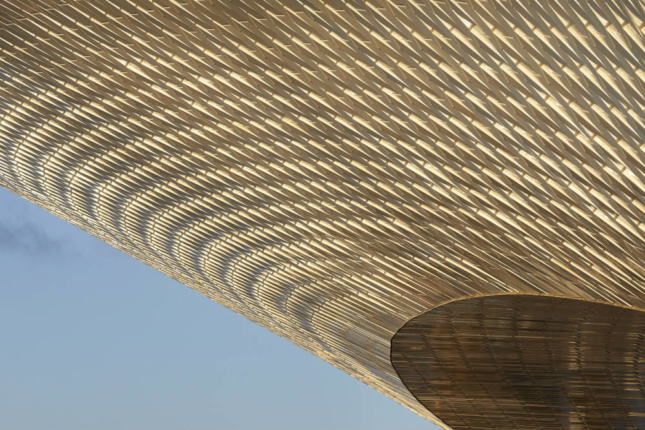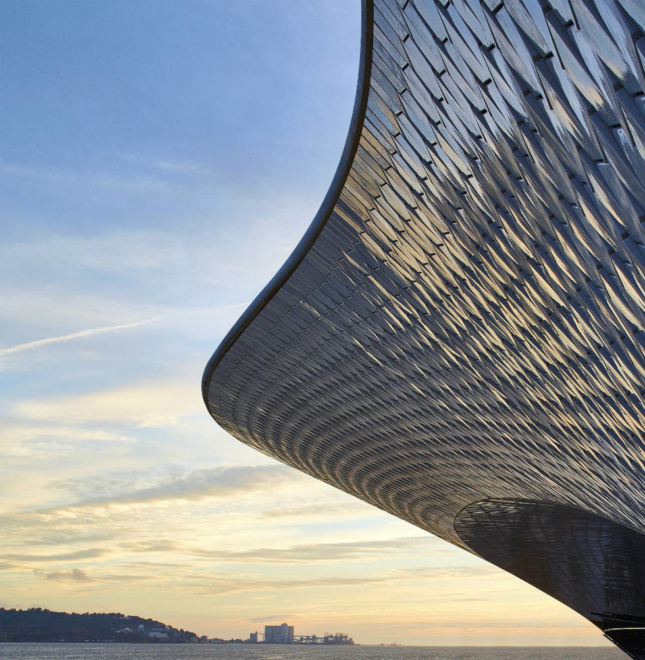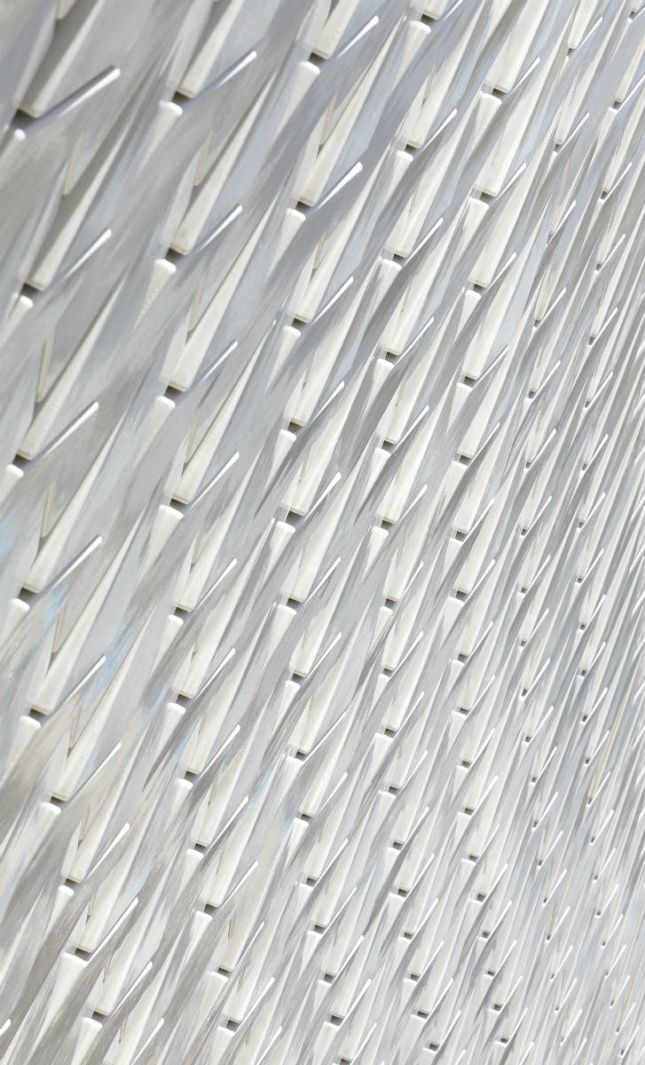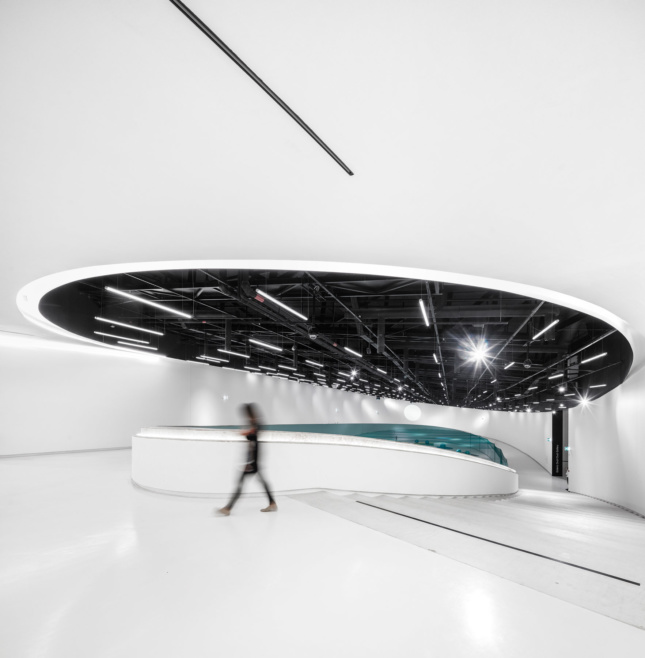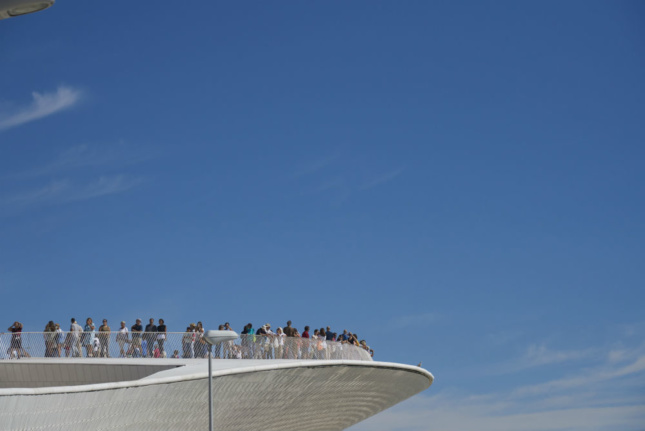The Museum of Art, Architecture and Technology (MAAT) is a new exhibition space created for EDP, a Portuguese foundation in Lisbon. The building opened in October of 2016 and just created its first curated exhibition. I had an opportunity to visit its exhibit Utopia/Dystopia: A Paradigm Shift in Art and Architecture and it provided an opportunity to see how the new structure functions and is being programmed.
Designed by British architect Amanda Levete’s firm AL_A, The MAAT operates as a ‘Kunsthalle,’ with no permanent collection of artifacts, but as a space to promote and stage cross-cultural or interdisciplinary experimentation. The building has several functional exhibition galleries, but its focus is an enormous, 13,000-square-foot, centralized elliptical space, ringed with steep inclined viewing ramps made for theatrical performances and temporary installations. The ramps are meant as viewing platforms but the steepness of the slope propels viewers down and then up and around the central ellipse. This constant movement by viewers can allow them—if curated properly—to be part of the action or to become the event itself. It’s an interactive public space for an age more familiar with digital and VR images on a screen than in a physical gallery.
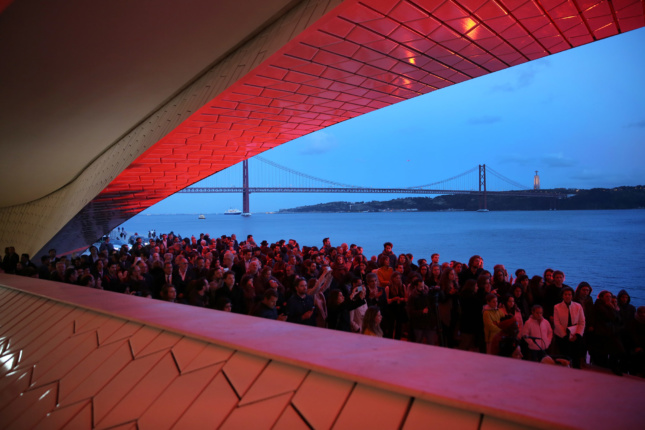
The low, long profile of The MAAT’s exterior appears like a slightly opened oyster shell set in the mud along the facing Tagus river and estuary. If one imagines the shell opened ever so slightly, this is where Levete has placed the entrance into the building. Up a curving set of long, narrow steps, with a hovering deep overhang meant to capture the dappled reflection of the river, the public is pulled in a short entrance into the lobby and then into the grand open performance ellipse. Its facade is covered in 15,000 “crackle glazed three-dimensional” tiles that give it a fish scale like dimension on the cityscape and honors the city’s many tiled facades. When these ceramic rectangles catch beams of natural dappled or artificial light the building magically glows like a light bulb.
But it is not simply the facade of the building that comes alive through refraction. This is a building meant to perform on every surface. It is, in some ways, as much landscape as it is an enclosure and thus a structure meant to perform. The term ‘performative architecture’ stands for several older and newer ideas in architecture and the design of urban public space. If by the term one means buildings created to encourage active public engagement and themselves actively participate like Roman baroque urban experiments or even worlds fairs, then Levete’s building is an unqualified success. It becomes a pedestrian promenade and visitors areg meant to walk along, onto, or over its tiled sloping roofscape like Foreign Office Architect’s 2003 Yokohama terminal.
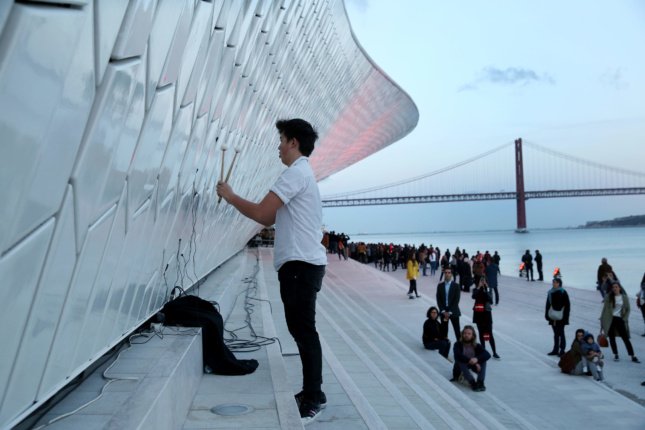
Last week’s opening programmed performances to take place on every surface of the structure. It started with a musician ‘playing’ the ceramic tile facade with a vibraphonist’s soft mallets and group of musicians dancing and singing on the top step of the covered front entry platform. The central oval space featured an opening night performance by Mexican artist Hector Zamora that featured crews of migrant laborers destroying a fleet of old unusable (but beautiful) fishing boats as a protest against the disappearance of a way of life represented by the small craft. The highlight of the first-day performance featured O Terceiro Paraiso, choreographed by Italian Michelangelo Pistoletto on the sloping roofscape public space. The Italian arte povera and ‘action’ artist theorized a potential new utopia—in accordance with the exhibition opening in the galleries downstairs—that asked several hundred participants to hold hands in three labyrinths made of a single line that would create a new third utopia from the two earlier ones that he theorized as an everyday ‘Gesamtkunstwerk.’ The performance was pushed along by the large sloping facade of the roof that stands as an open space above the riverside promenade and facing back to the city in the distance.
It should be pointed out that the Levete renderings show the roofscape with a whiplash-like tail flying over the adjacent freeway to the roof of The MAAT. This freeway acts as a wall that cuts off Lisbon from its waterfront as if it were lifted out from any number of American cities. When (and if) this tail ramp is finished it will bring the city across the freeway and onto the roofscape and be the performative space the museums want to be for their home city.
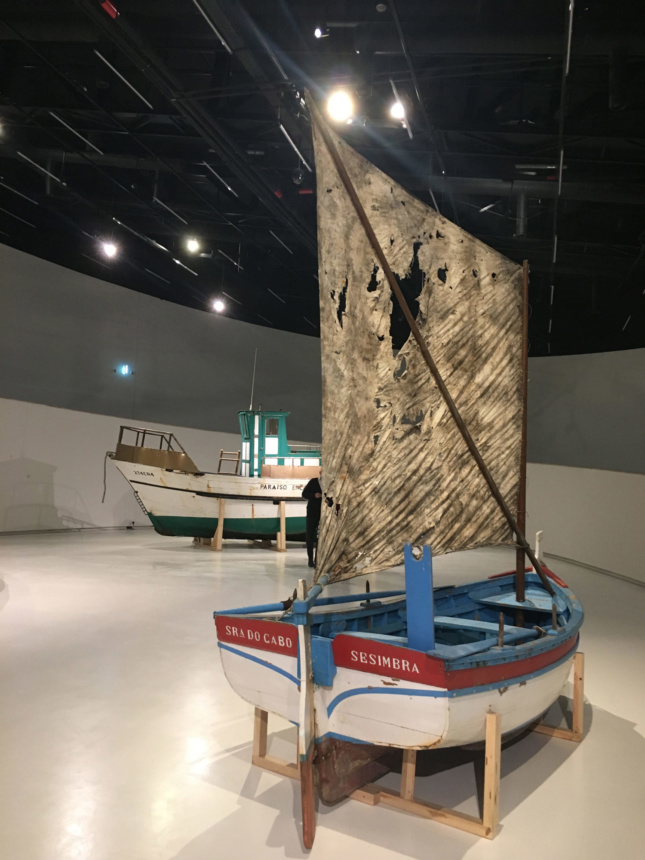
Levette has delivered a potentially valuable new focus and hub for the Portuguese capital but it remains for the MAAT director Pedro Gandhao and his curatorial staff to realize the spatial and performative qualities of the museum. They have the opportunity to make this one the most exciting venues in the world that programs architecture and technology alongside art.









